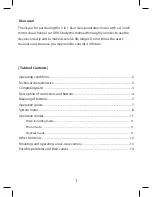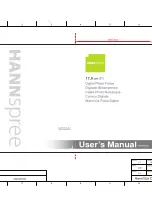
k-
If the operator has removed pressure from
exposure button all power will be removed and
the shutter blades will open to permit viewing.
If the button has not been released, the shutter
blades will remain closed until the operator
removes his finger from the button.
at the aperture for flash exposure at the set
distance (Figure 1-13). The interceptor latches
in this position. At this time, the ECM removes
the power from solenoid #2. The solenoid, like
any inductive device, produces a flyback voltage
when its magnetic field collapses. This flyback
voltage is used to trigger the ECM which, in
turn, applies power to the FFA to ignite the next
unused flashbulb.
l-
When a flash bar is placed in its socket, it closes
switch S2. This switch connects the ECM in the
flash mode. All of the mechanical sequences will
remain as just described. The ECM however, will
now provide power to solenoid #2 when switch
S5 (in the gear train) opens, and will maintain it
in a power down condition when S3 opens.
o-
The shutter performs an additional function
in the flash mode. One of its circuits examines
the #1 flashbulb contacts and by virtue of the
resistance determines whethever or not the bulb
has been fired. If the #1 lamp is exhausted, the
circuit scans the #2, etc. When an unused lamp
is located, the firing circuit remains connected to
the lamp until is used.
NOTE : It is important to be aware that in early
cameras the timing (integration) circuits of the
substrate continue to function even though the
insertion of a flash array has placed the substrate
in the flash mode. Thus, if the ambient light level
is high, the picture may be made by ambient light
without firing the flash. Also, if all the flash lamps
are expended and a picture is taken, an ambient
light exposure will result. The photographer will
recognize this situtation by the absence of a flash.
However, he may still get an acceptable picture.
the aperture in this case will be determined by
the flash to subject distance.
m-
Within the shutter assembly a cam follower
is driven by a cam on the focus wheel and
arranged so that it will mechanically stop the
travel of the shutter blades relative to the focus
distance. When solenoid #2 is not energized, a
spring on the cam follower prevents engagement
of the cam follower and the shutter mechanism
functions in the ambient exposure mode. When
the ECM is programmed for flash, solenoid #2 is
energized and the shutter openeing is controlled
by focusing distance.
n-
When making a flash exposure and the shutter
blades start to open, the interceptor will be set to
a position determined by the focusing mechanism
but out of the path of the interceptor pin. When
solenoid #2 is energized, it pulls the interceptor
into the pins path of the blades and stops them
S1
Closes
Y DELAY
FLASH DELAY
Sol. #1
Power
Down/
SA BC
Closes
S3
Opens
Sol. #2
Power
Down
At Hight Light
Levels Early
Cameras will
take Ambient
Exposure
(does not apply to
"P" configuration (T1)
and
"P" configuration (F)
with a green power chip)
Stop
Ambient
Exposure
Blades
Close
S4 CA
Opens
Film
Ejected
Cycle
Complete/
S5
Closes
S5
Opens
Sol. #2
Power Up
Sol. #15
Power Up /
FT
Blades Open to Correct
Aperture S4 AC Close
to Power FFA
Sol. #1
Power Up
Activated
Flash delay
FD
Sol. #2
Power Off
FF
End
Flash
Delay
Down
S4 BC
Closes
S3
Close
Flash
Time
Out
FTO
Flash
Fires
FLASH TIMING SEQUENCE CHART














































